Piet Mondrian (1872 – 1944) was a Dutch artist who is most famous for his contribution to abstract art through works in which he used only the straight line, the three primary colours, and the neutrals of black, white and gray. He coined the term neoplasticism for this style. Mondrian had a long artistic career which essentially began with his works in Luminism, after which he experimented in Cubism, before finally moving to neoplasticism and entering the mature stage of his career. World War II made him move from Paris to New York City which also brought about important changes in his art. Know about the art of Piet Mondrian through his 10 most famous paintings including neoplastic masterpieces and his works in Cubism and Luminism.
#10 The Red Tree
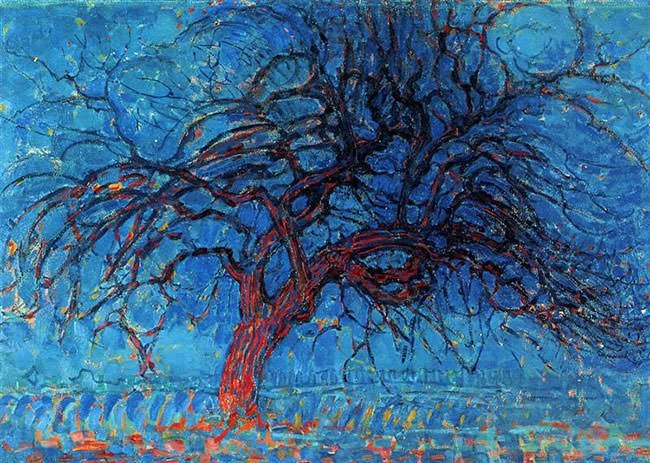
| Location: | Gemeentemuseum den Haag, Hague, Netherlands |
| Year: | 1910 |
After following the prevailing trends in Dutch art, Piet Mondrian became involved in the Luminism movement which devoted greater attention to light effects and rendered them using the primary colors. This is the most famous painting of Mondrian’s Luminist period and an important work in his series on the tree theme. In it, he creates a balance between the contrasting hues of red and blue, and between the violent movement of the tree and the blue sky. Mondrian thus produces a sense of equilibrium which remained his prevailing aim in representing nature.
#9 Victory Boogie Woogie
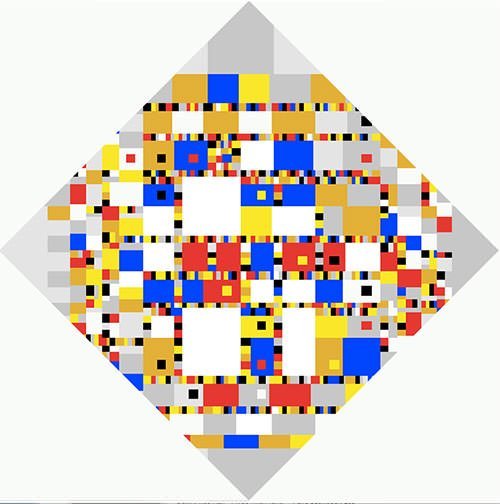
| Location: | Kunstmuseum, The Hague, Netherlands |
| Year: | 1944 |
This painting is famous for being the last work of Piet Mondrian which remained unfinished due to his death caused by pneumonia in February 1944. While Mondrian’s works of the 1920s and 1930s have scientific austerity about them, this painting is bright and lively reflecting the upbeat music by which it is inspired. The work was conceived in expectation of victory of the Allied Forces in World War II.
#8 Composition with Large Red Plane, Yellow, Black, Gray and Blue
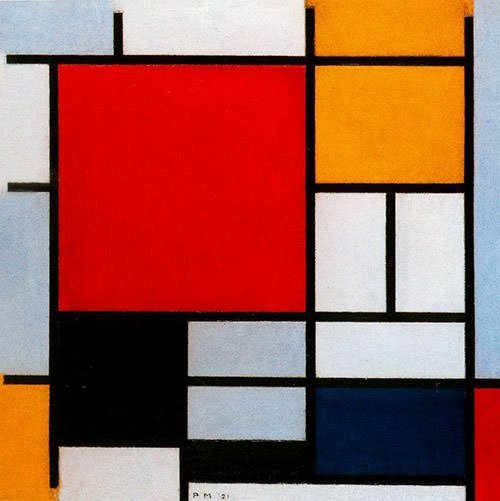
| Location: | Dallas Museum of Art, U.S. |
| Year: | 1921 |
Piet Mondrian is best known for his artistic style Neoplasticism in which he simplified visual compositions to the most basic elements of the straight line, the three primary colors, and the neutrals of black, white and gray. By early 1920s Mondrian had created this new form of abstract art, distinct from Cubism and Futurism. In this painting he has used one large dominant block of red which is balanced by distribution of smaller blocks of yellow, blue, gray and white around it. It is one of his most famous early neoplastic masterpieces.
#7 New York City I
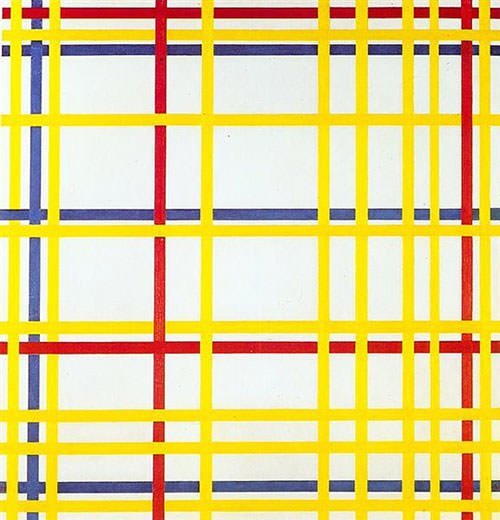
| Location: | Georges Pompidou Center, Paris, France |
| Year: | 1942 |
Due to the onset of the Second World War, Piet Mondrian moved from Europe to the New York City in 1940 and the shift led to a new phase in his artistic career. His American phase, which lasted till his death in 1944, was marked by new features like double lines; and substitution of patterns of black line with colored bands. New York City I, along with Broadway Boogie-Woogie, is the most renowned masterpiece of the last phase of Mondrian’s career when his artistic style reached its most evolved stage.
#6 Composition No. 10 (Pier and Ocean)
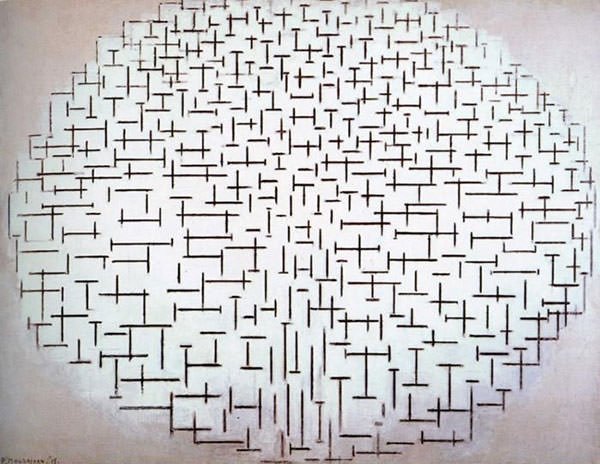
| Location: | Kröller-Müller Museum, Otterlo, Netherlands |
| Year: | 1915 |
In the beginning of the second decade of the twentieth century, Piet Mondrian was influenced by the art movement Cubism, which was pioneered by Georges Braque and Pablo Picasso. Mondrian’s Cubist period is considered to have lasted from 1912 to 1917. It was during this period that he painted a series known as Pier and Ocean which pushed his Cubist style to its extreme limit and is considered the definitive step in his path toward pure abstraction. Composition No. 10 is the culmination of the series and is considered as the developmental flashpoint of his career.
#5 Tableau I: Lozenge with Four Lines and Gray

| Location: | Museum of Modern Art, New York City, U.S. |
| Year: | 1926 |
In the mid-1920s, Piet Mondrian began producing his “lozenge” paintings to express a more dynamic rhythm in his abstractions. The lozenge paintings are called so because of their diamond-shape that results from Mondrian tilting square canvases by 45 degrees. This painting relies on only four lines of varied thickness making it one of the most minimal of Mondrian’s canvases. It is the most famous of his lozenge paintings which set an important precedent for the shaped canvases of the Minimalists in the 1960s.
#4 The Gray Tree
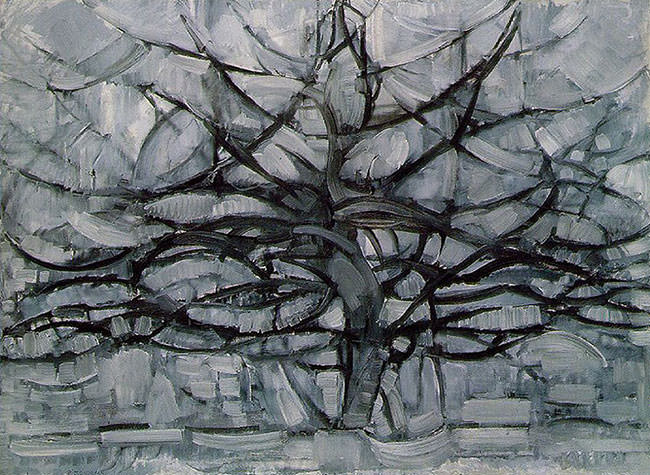
| Location: | Gemeentemuseum den Haag, Hague, Netherlands |
| Year: | 1912 |
This painting was created by Mondrian at a time when he was beginning to experiment with Cubism. The tree is subtly oval in form following the Cubist practice seen in works by Pablo Picasso and Georges Braque. The Gray Tree is one of Mondrian’s most famous works and an important painting with regard to the development of his career as it exemplifies his early transition toward abstraction and his application of Cubist principles to represent landscape. Mondrian’s interest in reducing form to a structured organization of lines can also be seen in this work.
#3 Composition II in Red, Blue, and Yellow
| Location: | Kunsthaus Zürich, Switzerland |
| Year: | 1930 |
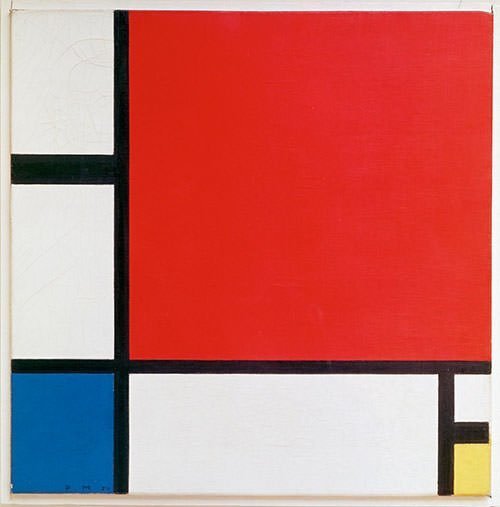
This painting was created at a time when Mondrian’s art had reached a highpoint of purity and sobriety. Through the previous decade he had evolved his style while creating several neoplastic masterpieces. In this work, Mondrian makes the elements seem to grow further beyond the edge of the canvas in rhythmic expansion. Composition II in Red, Blue, and Yellow is among Mondrian’s most renowned works. The front cover of Australian alternative rock band Silverchair’s 2007 album Young Modern is a tribute to this painting.
#2 Composition with Red, Yellow, and Blue
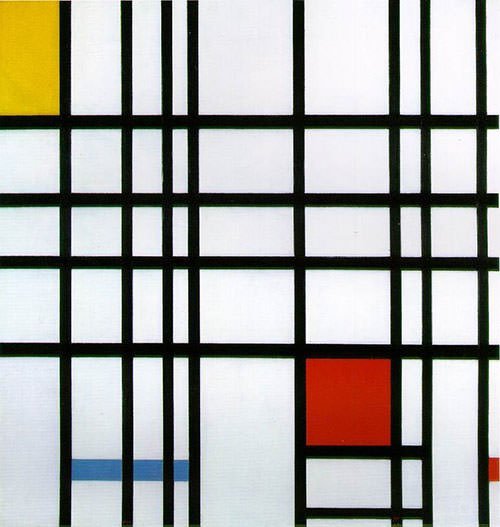
| Location: | Tate Modern, London, U.K. |
| Year: | 1942 |
This composition, which is said to mesmerize art lovers still because of its unique freshness, represents the pinnacle of Mondrian’s abstraction based on patterns of black lines, after which he substituted them with colored bands. The black lines are the flattest elements in the painting with the least amount of depth, while the colored forms have the most obvious brushstrokes all running in one direction.
#1 Broadway Boogie Woogie
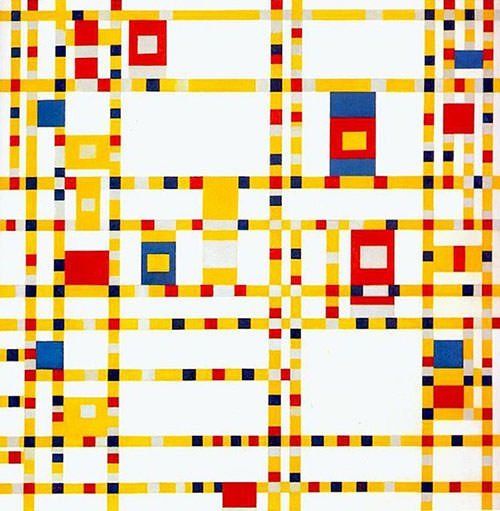
| Location: | Museum of Modern Art, New York City, U.S. |
| Year: | 1943 |
Mondrian’s last complete painting and the most famous, this canvas contains primarily large unbounded rectangles of color, some of which have smaller concentric rectangles inside them. Broadway Boogie Woogie is inspired by the city grid of Manhattan and the Broadway boogie woogie music, which Mondrian loved. The painting is considered the pinnacle of Mondrian’s representation using his pictorial vocabulary of lines, squares and primary colors. It marks the culmination of his stylistic innovation and is one of the most influential artworks in the school of abstract geometric painting.

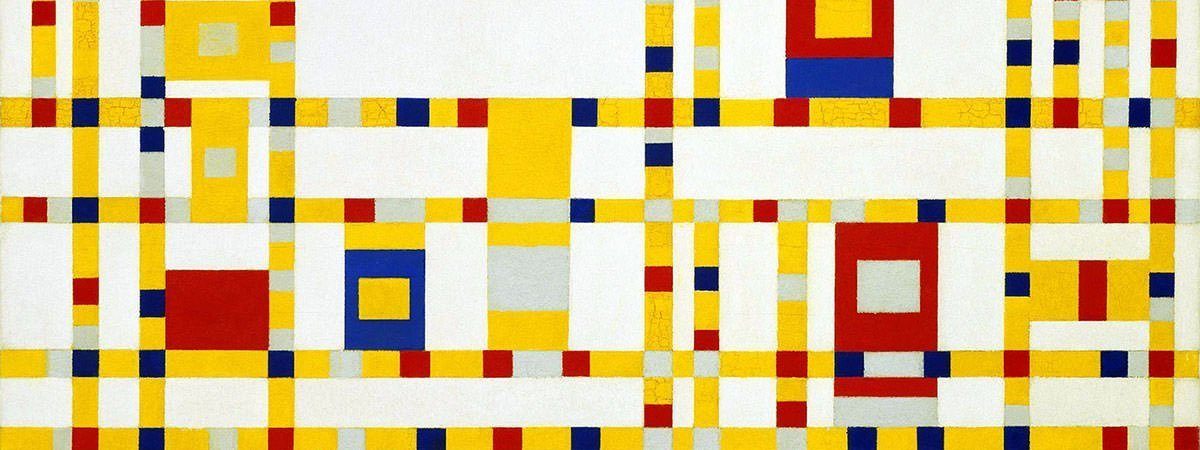
I have a very nice oil on canvas done by H. Mondiran and wanted to find out more about the artist. Can anyone help out, if you can email me back at tjrhatigan160@gmail.com
hi this is cool
In 1978 and an uninterested in art 15 years old at Drummond High school, Edinburgh, Scotland. I did a “colours at night” in Art class, The teacher put it on the corridor wall, It was the first time I’d ever had a well done, never the less had anything put on display. It was coloured shapes surrounded by black outlines, I’d forgotten about it, then just today 04 May 2020, I watched a programme of the Hustle, the episode was about a Modrian, I’d never Heard of Modrian until now, but it reminded me of my painting, and after all those years, realised as to why the teacher liked it so much. I wish I’d been able to keep it, just for verification.
For everyone that grew up in the US during the 70’s COMPOSITION II IN RED, BLUE, AND YELLOW instantly reminds you of The Partridge Family bus.